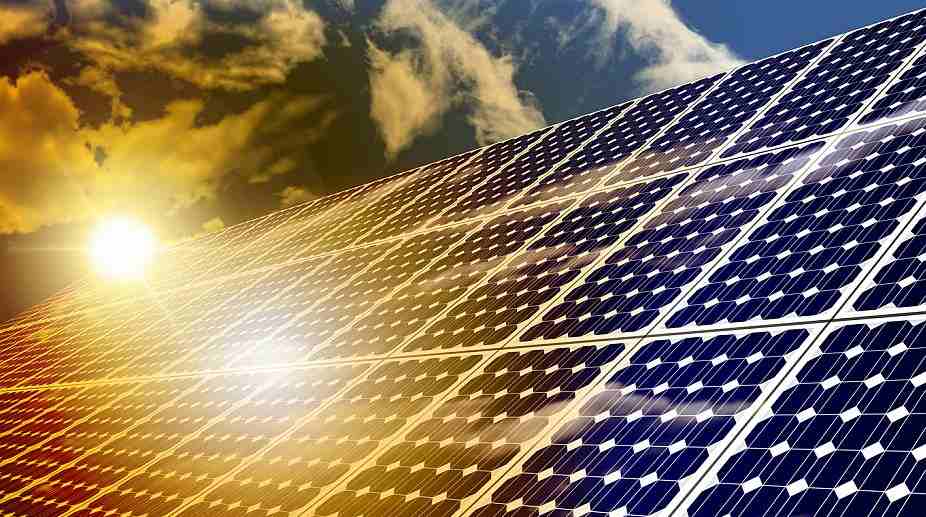Adani Group to build world’s largest renewable energy project in Gujarat
AGEL currently has an operating portfolio of 10,934 megawatts, and is targeting 45 GW of renewable energy capacity by 2030.

Representational Image: iStock
One hundred and forty km from Kiev, the capital of Ukraine, lies Chernobyl, the former nuclear power station. When constructed, it was the biggest nuclear station in the European part of the former Soviet Union. It had four reactors. On 26 April 1986, the fourth reactor exploded. The result was radiation that was borne by winds around the world. A 30 km restricted area around the station was established. Everyone who lived there was moved.
After the accident, the station was quarantined. The confinement of the area was built as fast as possible to cover the reactor and avoid further spread of radiation. The work was done in a very short time. Ninety thousand people participated in the clean-up of the accident in the first two years.
Thirty years later, the confinement needed to be rebuilt. In November 2016, the construction of the New Safe Confinement was done. It creates a higher level of safety around the destroyed nuclear power station. As a result, the level of pumped radioactive waste water from the reactor was four times less in 2017, compared to the same period a year earlier. This means there is less radioactive water seeping into the ground.
Advertisement
The new confinement project aimed to protect the environment and the reactor. In addition, it also aimed to remove 1,000 tons of the defunct reactor’s radioactive material. After the confinement was completed, it opened an opportunity for further development of the area. One of those projects is the Photovoltaic Power Station.
The capacity of the new Photovoltaic Station is supposed to be one megawatt. Ukraine has a high feed in tariff at $0.18 per kilowatt hour. That is higher than the average tariff in the European Union. The tariff in Ukraine depends on the source of energy. Solar energy has the highest tariff amount. The Ukrainian government guarantees this tariff until 2030.
The goal is to make use of the area around the old Chernobyl Nuclear Station. The authorities support green energy development. Crimea, the coal-rich eastern part of Ukraine, is occupied by Russian troops. Deprived of coal, any new source of energy is highly important for Ukrainians.
The decision to build a new Photovoltaic Station was made in April 2017. The government opened an application process for companies. The government did not know whether the project would attract investors. Eventually, 50 companies expressed possible interest in using this formerly radioactive area.
The first private investment in the solar station was $1.3 million by a German-Ukrainian company. The name of the private company that is building the Photovoltaic Station is Solar Chernobyl. Their plan is to build 3,762 solar modules on an area of 3.4 ha that they rented for 49 years. The construction is supposed to be done very soon. Additionally, Ukraine is negotiating with a French company to build a $1.25 billion solar park.
There are several benefits of a new Photovoltaic Station in Chernobyl. First, it is a free territory that nobody uses. The area cannot be used for agriculture, forestry or manufacturing because of the radiation levels. Any use of this territory would be beneficial. Second, solar energy capacity is not compromised by residual radiation. Solar stations require minimum effort of human resources and are still efficient in a radiation area.
Another positive highlight is social opinion. Getting green energy from Chernobyl gets good public feedback. Almost everyone in Kiev has relatives or friends who participated in the liquidation of the Chernobyl nuclear site. Producing safe solar energy from Chernobyl has important symbolic meaning for those people.
Some of the challenge is related to energy consumption. The capacity of the market to sell the electricity close to the station is small. Very few people currently live in and around Chernobyl. It is mainly workers and locals who went back after the accident. The consumption level of electricity is low. Transfer of such a small amount of electricity long distances is inefficient.
However, the future plan is to increase the production of renewable energy. The goal is to build several solar stations, including storage and transmission, in the 10 km area around Chernobyl. In a perfect scenario, the solar station will produce 2.0 gigawatts, which is half the output of the former Chernobyl Nuclear Station.
The writers are, respectively, professor of law at Jindal Global Law School, Sonipat and his former student, a Ukrainian national.
Advertisement